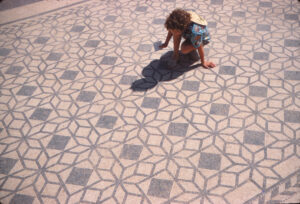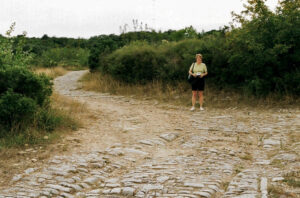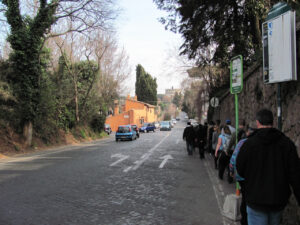 A small child, curls bobbing on a head she’s forgotten to cover with the sunhat her mother insists on, crouched down on a Roman mosaic floor in north-east Spain. Mesmerised by the purity of the pattern, and the tiny marble squares, she almost didn’t hear her father calling her to the next one.
A small child, curls bobbing on a head she’s forgotten to cover with the sunhat her mother insists on, crouched down on a Roman mosaic floor in north-east Spain. Mesmerised by the purity of the pattern, and the tiny marble squares, she almost didn’t hear her father calling her to the next one.
Jumping up, she eagerly ran to him, babbling questions like many eleven-year-olds do: who were the people who lived here, what were they called, what did they do, where did they come from, where have they gone?
The father, a numismatist and senior ‘Roman nut’, told her about the Greek town founded 575 BC which became Roman Emporiæ in 218 BC, where traders sailed in and out with their cargoes of olive oil, wine, textiles, glass and metals; where people lived in higgledy-piggledy houses, traded from little shops; where the Roman army based its operations; where money was minted. And the people came from every corner of the Roman Empire to live and work. Boys went to schools and girls learnt to be good wives and mothers.
The little girl listened carefully to every word, sifting the information. Her hand in his, she turned as they left, looked back at the mosaics and asked her father:.
“What would it be like if Roman women were in charge, instead of the men?”
Clever man, my father replied:
“What do you think it would be like?”
I thought about it for nearly five decades, then poured it all into my first book.
Since that first Roman road trip in Spain, I’ve clambered over bridges, explored former bathhouses, barracks and forts and wondered at theatres and amphitheatres in different parts of France, Germany, Britain, Italy, even former Yugoslavia. And I’ve walked on Roman roads connecting these sites and settlements across Europe.
 The via Domitia running along the coast from Spain to Italy provided a fast and sure link between the key province of Hispania and the imperial centre in Rome. Built in 118 BC, it’s still with us, wheel ruts included, over 2,000 years later. At Ambrussum in southern France, it formed a junction with the route northwards up the Rhone Valley into central Gaul. I stood on those slabs, where those three roads met, closed my eyes and ‘saw’ thousands of people, carts, mules, legionaries and the odd imperial courier, many of them shouting at me to get out of their way. The Romans were busy people, much like us today.
The via Domitia running along the coast from Spain to Italy provided a fast and sure link between the key province of Hispania and the imperial centre in Rome. Built in 118 BC, it’s still with us, wheel ruts included, over 2,000 years later. At Ambrussum in southern France, it formed a junction with the route northwards up the Rhone Valley into central Gaul. I stood on those slabs, where those three roads met, closed my eyes and ‘saw’ thousands of people, carts, mules, legionaries and the odd imperial courier, many of them shouting at me to get out of their way. The Romans were busy people, much like us today.
When writing my latest story set in AD 370 – itself a Roman ‘road trip’– I discovered how common it was for current routes to bear the names given to them two thousand years ago. The strada stalale 3 entering Rome from the north is still called the Via Flaminia; from the northwest, the Via Cassia (strada regionale 2) enters Rome heading for the Milvian Bridge as it did in Augustus’s day. And you can still walk (or in some parts) even ride in your car along the via Appia.
 The persistence of these road names seems romantic, but the Romans were hard-headed military engineers. For them, it was a question of reaching B from A in the fastest, most efficient and logical way. Small wonder than very many countries in Europe built their road networks following the same routes.
The persistence of these road names seems romantic, but the Romans were hard-headed military engineers. For them, it was a question of reaching B from A in the fastest, most efficient and logical way. Small wonder than very many countries in Europe built their road networks following the same routes.
Travel on the ground is exciting, eye-opening and educational, but seeing and touching the roads, floors and walls and looking at their glassware, pottery, household equipment and thus imagining the people who walked, lived, and worked in those places takes us on a very different journey – the one into time.
If you’d like to learn more about my alternative Roman novels, Roman life and a journey through time, please come and visit me at alison-morton.com.
